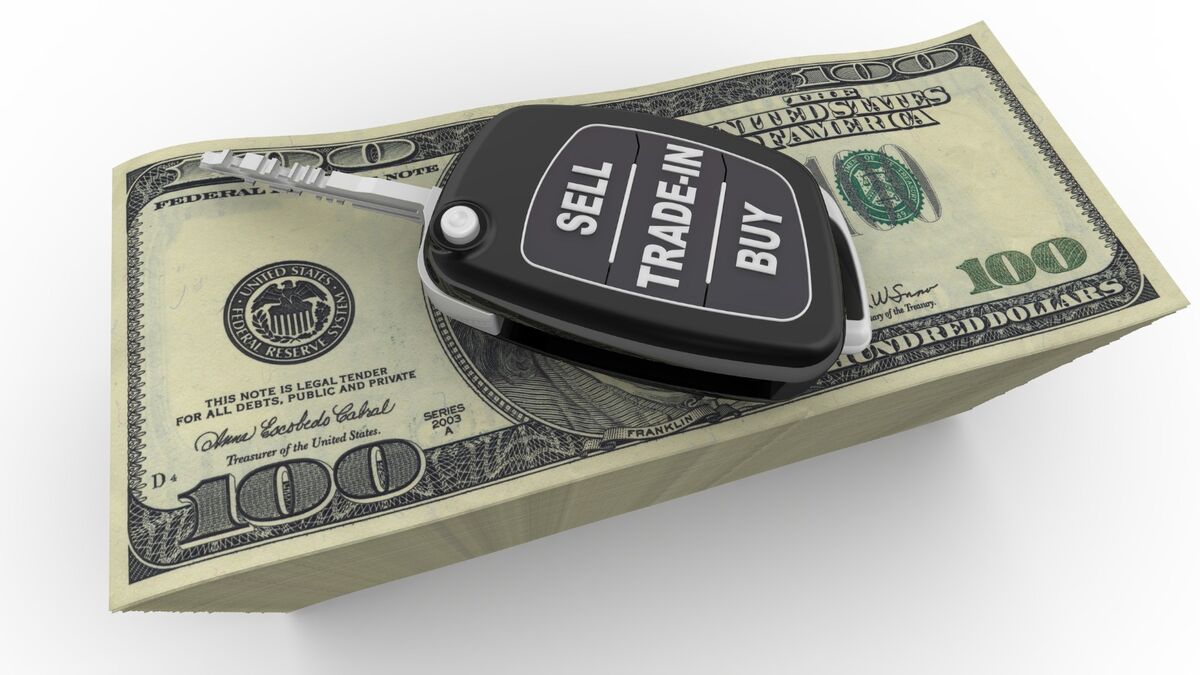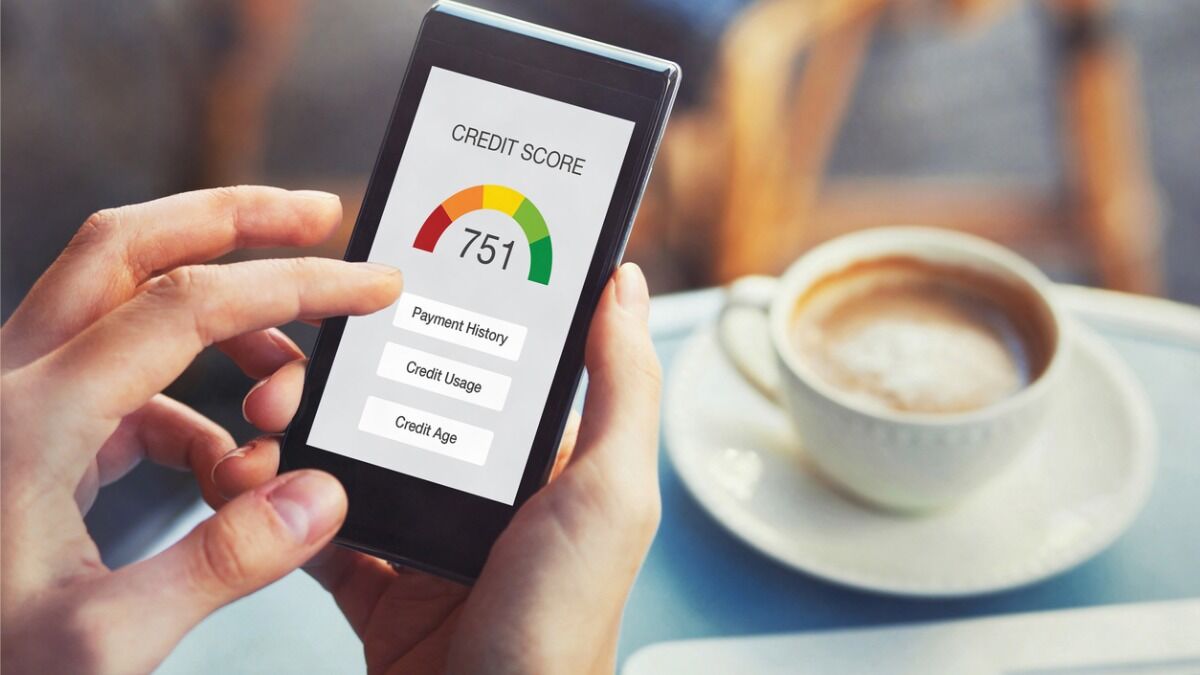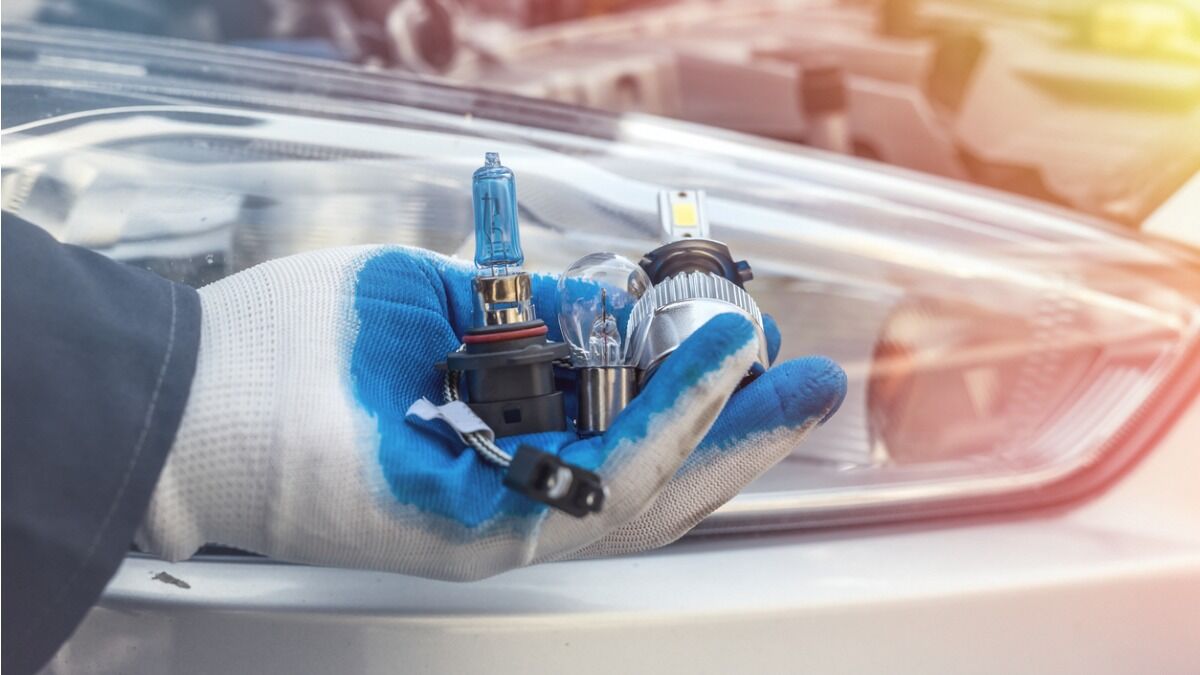Quick Facts About the Buying and Selling Marketplace
- Tariffs have begun raising new car MSRPs, but actual transaction prices are holding mostly stable.
- Used car prices fell slightly in August.
- The credit market shows signs of slight tightening.
Early fall will be a strange time to be car shopping. Months of dramatic headlines have suggested a lot of chaos in car pricing. The reality, however, has been far more tame.
Would you believe that both new and used car prices have been remarkably stable in recent months? It’s true.
It may not, however, be true for much longer. Automakers have begun warning Kelley Blue Book analysts that they may not be able to maintain that price stability for long. We’ve seen the first signs of big moves, as several have used the arrival of 2026 cars on dealer lots to raise sticker prices and factory-to-dealership delivery fees.
Those considering an electric vehicle (EV) are facing an entirely different calculation this month — you’re up against the clock. A $7,500 federal EV tax credit disappears after September. We expect some manufacturers to try to offset the loss with discounts, but you’re all but guaranteed a lower price on some EV purchases and all EV leases if you can act before the end of the month.
It’s still possible to find a good deal on a new or used car this month. The way the auto industry treats inventory means that a price change makes the news several months before it really hits buyers. But knowing what you’re up against is more important than ever this season.
We’ll explain what to expect when buying a new or used car, or selling or trading one in, and why it might make sense to act quickly.
- What New Car Shoppers Can Expect
- Each Automaker Is Responding Differently
- What Used Car Shoppers Can Expect
- Older, Less Expensive Cars Harder to Find
- Automakers Are Building More Expensive Cars
- How to Buy a Car Right Now
- Selling a Car Right Now
- Trading in a Car Right Now
- Looking Ahead
- Tips for Buying a Vehicle Right Now
What New Car Shoppers Can Expect
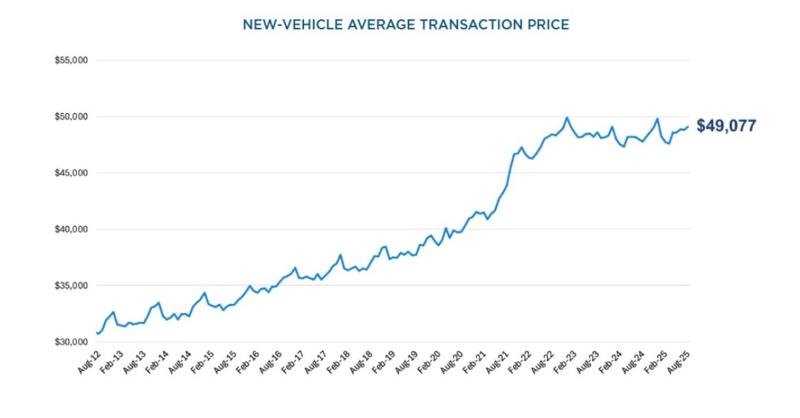
The average American new car buyer paid $49,077 in August. That’s just 2.6% higher than in July and the largest one-month increase we’ve seen in nearly two years.
Though that’s stark news, it’s probably less than you’d feared if you’ve been following the headlines. In April, the United States imposed 25% tariffs on imported cars. Similar 25% tariffs on car parts affected vehicles built in the U.S., too, since every model built here uses many imported parts. Prior to April, both categories had faced tariffs of just 2.5%.
However, automakers and dealers have largely absorbed the tariff costs. Ford, for instance, sold 14.2% more cars in the second quarter of 2025 than it did in Q2 2024, but the company lost money doing so.
Automakers were willing to do that while tariff policy was uncertain. But the Trump administration has recently signed long-term trade deals locking in permanent tariffs — 10% with the U.K. and 15% with the European Union, Japan, and South Korea. Cars imported from Mexico and Canada, where Detroit’s Big Three own many factories, still face a 25% levy.
Now that the tariffs appear set to last, automakers have begun warning that they cannot absorb the cost themselves for much longer.
They may have the perfect opportunity to raise sticker prices. New 2026 models are starting to arrive in showrooms. Every year, the model-year changeover means price increases. This fall could mean higher increases than normal because of the new trade agreements.
The good news? We haven’t seen much of this sign yet, and most dealers try to keep about two months’ worth of cars in stock. Some have more, and some have less. However, increased manufacturer’s suggested retail prices (MSRPs) take months to reach the average buyer.
RELATED: When Will New Car Prices Drop?
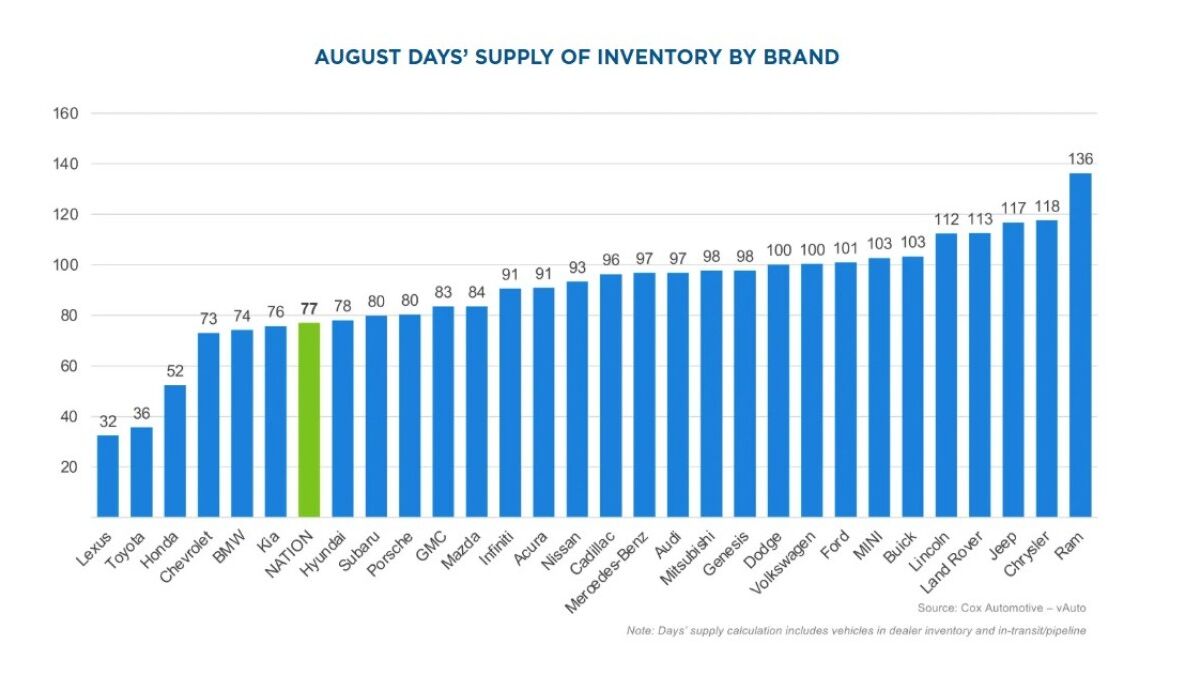
But last month, we saw the first indications, with several automakers increasing prices slightly higher than normal as they introduced a new model year. Several also bumped up the mandatory destination charge all buyers pay (which may seem like a junk fee, but is normal and not negotiable).
One additional wrinkle — the federal government’s $7,500 EV tax rebate program ends at midnight on Sept. 30. The IRS has told dealers that buyers can still claim the credit if they have a signed agreement to buy and have made a down payment when the clock strikes midnight, even if they haven’t taken possession of a car.
However, we’re likely to see some strange scenarios and edge cases testing exactly what that means. If you’re in the EV market, we advise you move fast to avoid any uncertainty.
Each Automaker Is Responding Differently
Car pricing is complicated, and each automaker has responded to tariffs differently. As long as the tariffs remain, the response is likely to shift constantly.
Some, like Hyundai and Mercedes-Benz, pledged not to raise prices at first, though increases are trickling in with the model-year change. Others are deciding on a case-by-case basis.
RELATED: How Each Automaker Is Responding to Tariffs
Automakers have absorbed some of the cost of tariffs for a while. They might even respond by raising the price of one car to help pay the tariff on another.
With so much constantly shifting, your best tool for understanding local price changes is the Kelley Blue Book Fair Purchase Price, which we calculate using recent transactions for that car in your area. We update each Fair Purchase Price weekly, showing you how tariffs and tariff anxiety are impacting the prices of the specific vehicles you’re shopping for where you live.
Loan Conditions Are Worsening, but The Fed May Cut Interest Rates
Prices are all that cash buyers need to worry about. However, few car shoppers are cash buyers. Most Americans borrow money to buy a new car.
After a summer of relatively easy credit, buyers began tightening their lending standards in August. Conditions are still relatively good for those borrowing money to buy a car. But there is new uncertainty in the process.
The Federal Reserve, commonly called “the Fed,” sets the federal funds rate, the interest rate banks use when they lend each other money. The federal funds rate determines interest rates for every type of loan, including car loans. It’s still on the way down, which should ripple through the economy over the next few months.
Due to economic uncertainty, the Fed has kept rates steady in recent months. The board is widely expected to cut interest rates at its September meeting, which would be good news for everyone. But the board meets amid unusual controversy, as the White House is attempting to force out one board member and a court has, so far, blocked that move.
Lenders are also newly shaken by the recent collapse of a prominent subprime auto lender. Bring patience to the loan application process this fall. It’s likely to be a little harder than it has been.
What Used Car Shoppers Can Expect
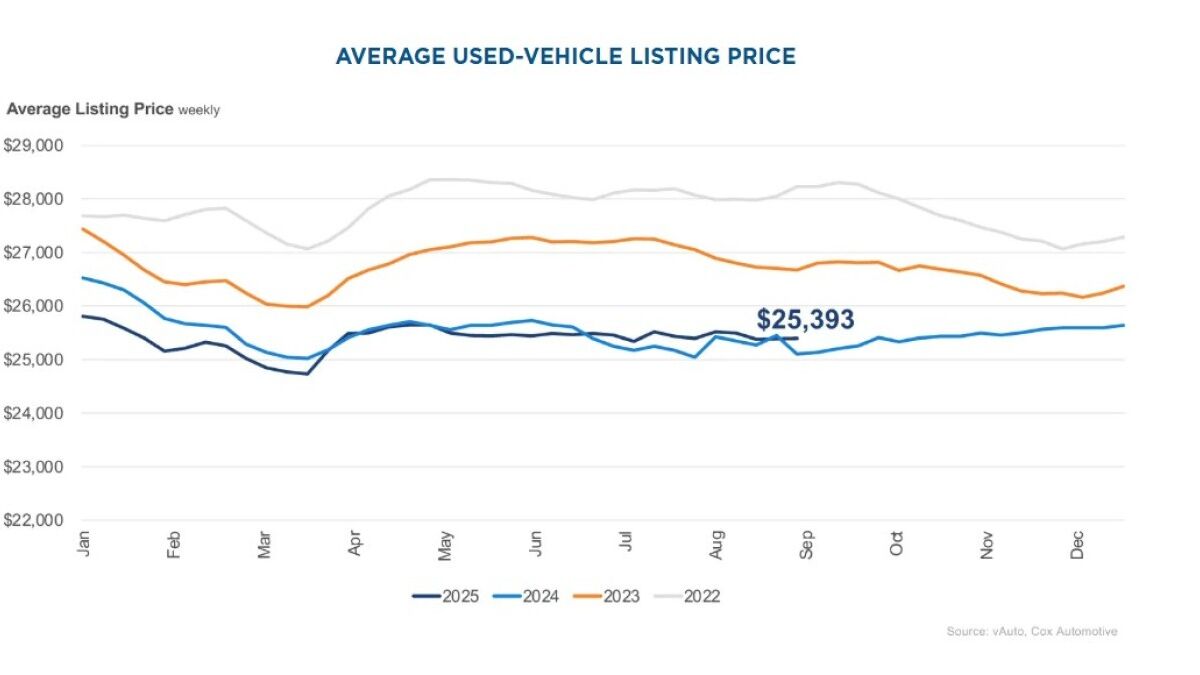
Amid all this chaos, some good news — the price of the average used car dropped in August. The decrease was just $124 over July’s average, but in this climate, you take your good news where you can.
The nationwide supply of used cars has been thin for years. Pandemic-era disruptions meant automakers built about 8 million fewer cars than they normally would have in 2021 and 2022. Millions of cars will never reach the used market, keeping supplies low for a long time.
Strangely, tariffs gave them a little relief. When tariffs were first announced, Americans rushed to buy new cars at pre-tariff prices. That flood of buyers also traded in many cars, helping used car dealers build up their inventories. That helped keep prices stable until recently. However, traffic to used car dealerships picked up, with Americans buying 9% more used cars in July than in June. Now, inventories are low at used car dealerships.
The best predictor of used car prices is the wholesale prices dealers pay for used cars at auction. Those held steady in August, suggesting that used car shoppers might see a little predictability in the fall.
Older, Less Expensive Cars Harder to Find
If you hope to find an older vehicle and your budget is less than $15,000, these cars remain in short supply. Dealers have just 29 days’ worth of used cars priced under $15,000 — 14 days below the overall industry average.
However, the tariff threat could push used car prices higher. When new car prices rise, would-be new car shoppers head to used lots looking for something still in their price range. More would-be new car shoppers start buying up the available used vehicles, drawing down the inventory. Plus, Americans are holding onto their cars longer than ever. The average vehicle on American roads is 12.8 years old. Automakers also produced fewer cars for several years after the 2008 recession, leaving fewer higher-mileage, older used vehicles available to sell.
The most accessible used cars carry prices between $15,000 and $30,000.
Automakers Build More Expensive Cars
If you haven’t been car shopping in a while, the cars on offer may surprise you.
In recent years, inexpensive cars have grown scarce. Recent analysis finds that sales of vehicles priced at $25,000 or less have fallen by 78% in just five years. Six years ago, automakers offered 36 new models in that price range. By late 2023, that number was just 10. Automakers have announced plans to cancel most of those 10, including the low-cost Mitsubishi Mirage that was axed after 2024.
Meanwhile, cars priced at $60,000 or higher have grown by 163% during the same period.
Dealers are pushing back, telling automakers they need more mainstream cars to sell, but correcting the problem will take time.
How to Buy a Car Right Now

New car prices remain about $10,000 higher than five years ago, amid the COVID-19 pandemic. That’s when the average transaction price for new vehicles was around $38,563. However, with all the technological advances and offerings, your next car will likely last longer and help you drive safer than ever.
RELATED: Buying Older, Used Cars in 2025
Vehicle quality studies repeatedly show that today’s new cars suffer fewer problems than those from just a few years earlier. Buyers of higher-priced used cars will likely see the vehicle driving on the road even longer. The same goes for those buying new ones.
With most automakers now building such durable cars, they compete by adding more high-tech features. Features like adaptive cruise control and Apple CarPlay are now more common than ever on entry-level vehicles. Read on to see our tips on buying a car below.
How to Leverage Incentives to Buy a New Car
Last month, car incentives comprised about 7.2% of the average deal, or about $3,534. To learn how to take advantage of incentives, read about our monthly best car deals to find dealer or manufacturer offers, including cash back and lower interest rates for financing your next vehicle.
RELATED: How to Buy a New Car in 10 Steps
Selling a Car Right Now
Few of us can sell a car without needing to buy a replacement. If you can sell now, what are you waiting for? You could get more for your vehicle if it’s in high demand, and that’s excellent news. The best way to get the most money for your used car is to sell it privately. But if you don’t want the hassle, there is still an opportunity to sell to a dealership.
PRO TIP: If selling a car, consider selling it peer-to-peer using Kelley Blue Book’s Private Seller Exchange marketplace. It’s a low-cost method that helps consumers earn more for their vehicles than selling to a dealership.
Trading in a Car Now
The ongoing shortage of used cars will be with us for years. As a result, you’ll likely still see respectable offers for your used car this month.
Searching for a decent price for your trade-in is still a good idea by shopping around. Each dealership tries to keep a balance of vehicles on its lot. Sometimes, the one you want to buy from doesn’t need your trade-in desperately, but a competitor does.
Research your vehicle’s Kelley Blue Book value, then call several local dealerships to see what they’ll offer you for it. Or try our Instant Cash Offer tool, which brings the deal to you from various dealerships without obligation. You can choose your preferred offer or use it to negotiate with others.
Is Trading in Your Vehicle a Good Idea?
Possibly. You could get more money than usual if your vehicle is in high demand. It will help defray the costs of buying a new or used car. However, if your vehicle is not in high demand, you can expect to get close to the Kelley Blue Book value. Use Kelley Blue Book’s car valuation tool to find out the price of your new or used car.
Can You Trade in a Vehicle That’s Not Paid Off?
Yes. Whether you have paid off your car or not, you can still trade it in. However, a car depreciates when you drive it out of the dealership. It’s best to take stock of how much equity you carry in the vehicle. Take the difference between the car’s current market value and what you owe to figure that out. Read our story on selling a car.
Looking Ahead
The remainder of this year is likely to be one of major disruptions to the car market. Tariffs could raise the prices of new vehicles further and impact used cars as buyers look to find less expensive models. Automakers and dealers will need to shift their practices to compensate. We could even see some cars canceled altogether if automakers find it impossible to import them at reasonable prices.
That doesn’t necessarily mean you should rush out and buy while you can. Still, if you need a new car soon, it might make sense to act now while prices remain steady.
RELATED: 10 Best Used Car Deals
Tips for Buying a Vehicle Right Now

If you shop right now, we recommend a few strategies to help you find the right new or used car that fits your budget.
- Expand your search. Widen your search to a broader geographic area because you could find a better deal or the used car you want outside your immediate area.
- Stay patient. Call dealerships to see what’s in stock for those high-demand vehicles. Leave a refundable deposit if you want first dibs.
- Buy a less expensive model. With higher car loan interest rates, consider buying a cheaper vehicle model instead of a more expensive one in the lineup you’re considering. Understand how much you can afford.
- Look for deals. Make sure to research car deals to find what works best for you. It may involve contacting or visiting several dealerships as you search for the right fit.
- Weigh your options. Don’t just look for a car; search for the best interest rates from banks or credit unions. Also, shop for your insurance rates ahead of the deal to know how much the higher auto insurance costs will be for your desired vehicle. Then, weigh all your options, including financing incentives and deals at the dealership, if that’s where you buy your next vehicle. Also, you may find that the prices of some newer-model used vehicles are almost the same as new cars. Just keep all your options open during your search.
- Avoid dealer markups. If you see a markup (sometimes called a “market adjustment”) on your final invoice, ask the dealer to remove it. If they refuse, shop at another dealership. Markups were more prevalent during the COVID-19 pandemic. However, dealers still mark up some vehicles that are in short supply.
- Question all add-ons. If your sales summary includes entries like “window tint,” “fabric protection,” “carpeted floor mats,” and other add-ons you didn’t request, ask the dealer to remove those line items from your invoice. Many dealers tack on these extras to make quick profits.
It may make more sense to keep your existing car for another year or two. If you must buy, be prepared to take excellent care of your next car to keep it running for a long time.
Editor’s Note: This article has been updated since its initial publication.
